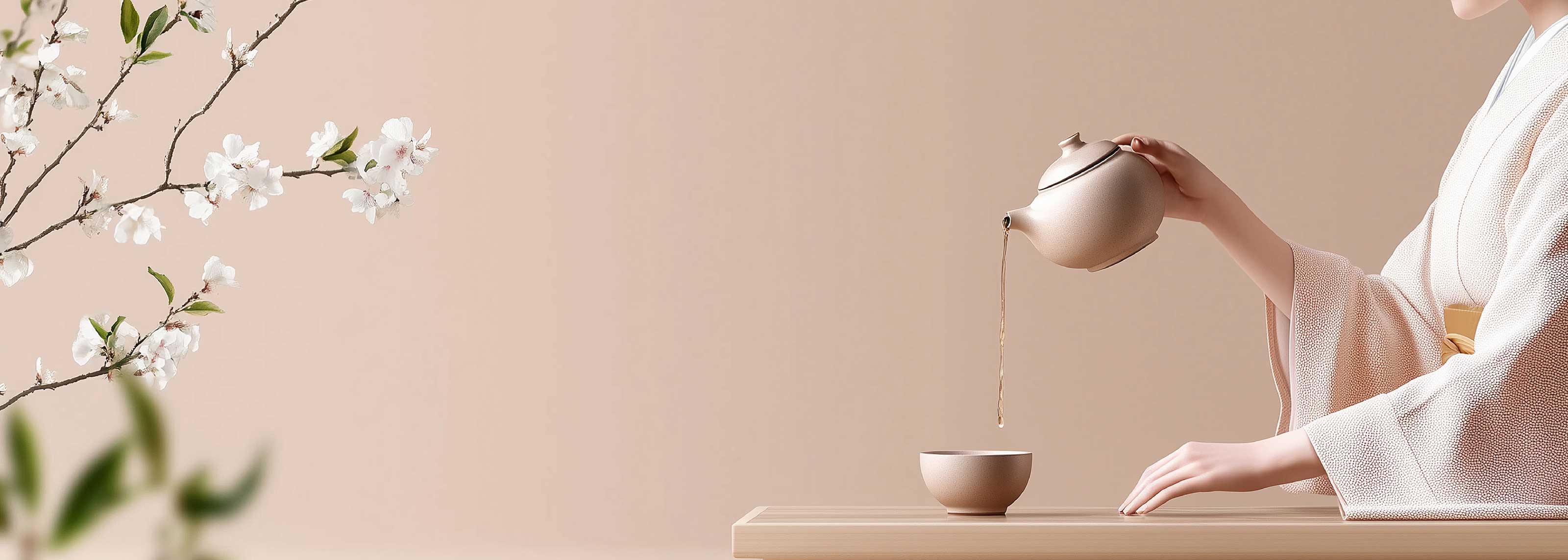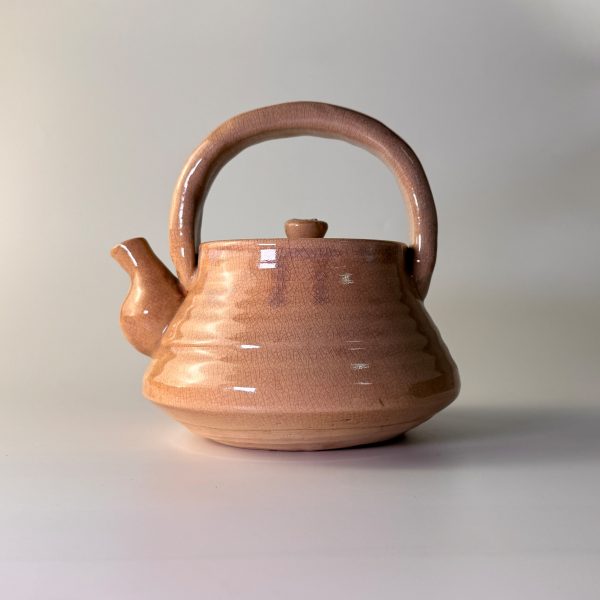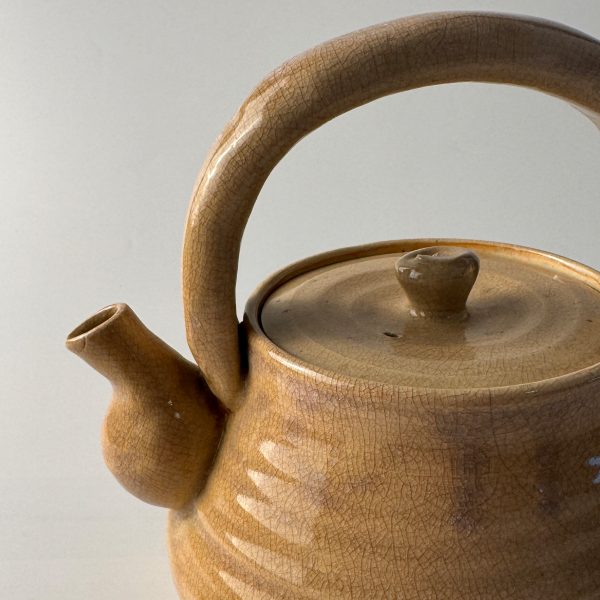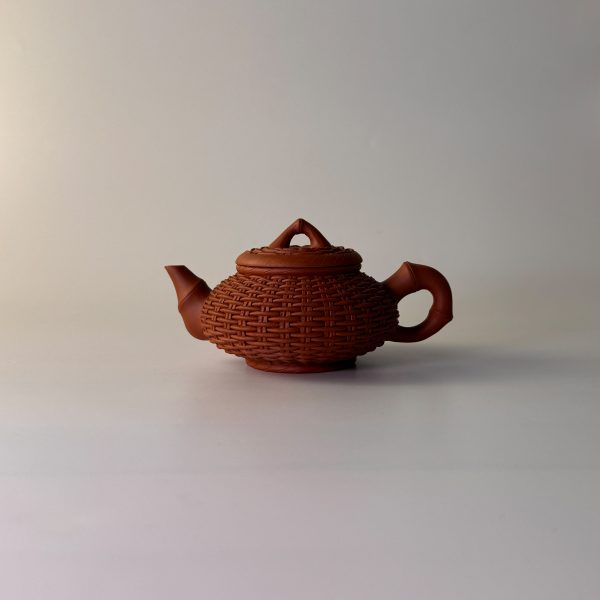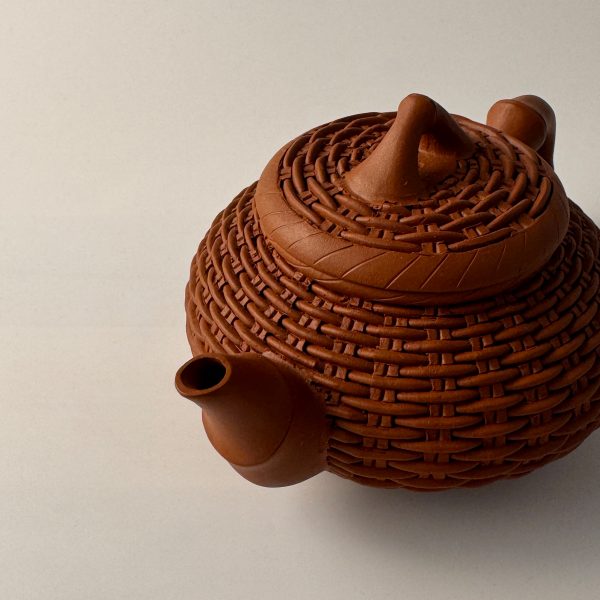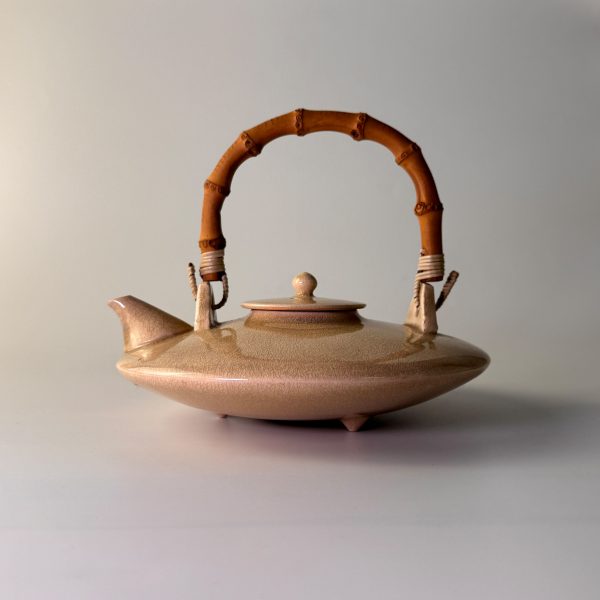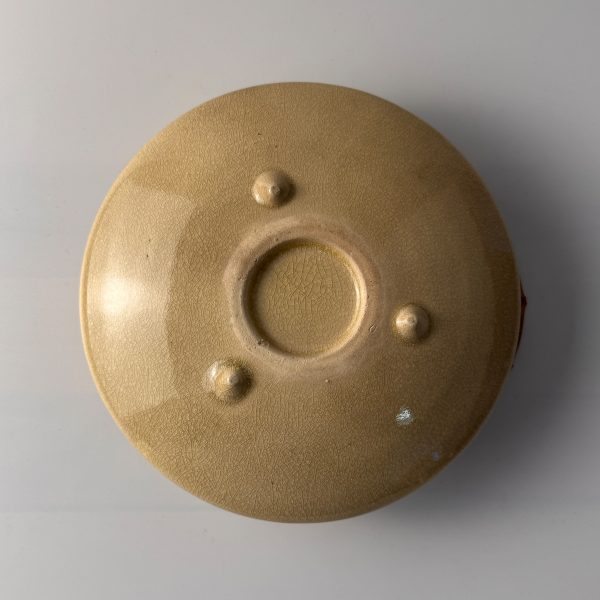Traditional techniques and craftsmanship
Original Japanese teapots
Immerse yourself in the fascinating world of traditional Japanese tea culture with our exclusive collection of authentic Japanese Kyusu teapots, which you can discover here. These exquisite masterpieces were created by renowned ceramic masters and come from Japan's most important ceramic regions, including Tokoname (輪かなめ), Kyoto (京都), and Mino (第里).
Our teapots are not only functional objects, but also treasures of ceramic art. Each teapot is handcrafted using traditional methods, such as "nerikomi" (練りこみ), in which different types of clay are artfully fused together to create a unique pattern.
And let's not forget "Yakishime" (焼き縄め), a high-temperature firing technique that enhances the durability and natural texture of the clay surface. These techniques have been passed down and refined from generation to generation, giving our teapots their unique quality. Each teapot is unique and reflects the dedication and expertise of the master ceramic artisans.
Brewing methods and teapot design: Creating the perfect cup
The flavor profile of Japanese teas is determined not only by the quality of the leaves, but also by the brewing technique and the chosen vessel.
Take the traditional Kyusu teapot, for example. Its clay body and wide base ensure optimal heat retention and even extraction—an ideal environment for shaded green teas like Gyokuro or Kabusecha. These teas reach their peak flavor when steeped at low temperatures for extended periods. This allows the natural umami sweetness and characteristic delicate flavors to develop, while bitterness and astringency are minimized.
Ergonomic design also plays a role. Inspired by the Chinese gaiwan, many Japanese teapots have a handleless shape that fits comfortably in the hand and allows the tea master to precisely control the pouring spout and feel the pleasant warmth of the vessel.
For a modern touch, glass teapots with integrated strainers are perfect for the cold brew method (mizudashi). Steeping Japanese green teas in cold water—often overnight in the refrigerator—results in an infusion that is particularly sweet, mild, and smooth, with virtually no bitterness.
In this way, both the brewing method and the choice of vessel become part of the ritual, allowing the nuanced character of Japanese teas to fully unfold and transforming a simple cup of tea into an artistic experience.
Tokoname (輪かなめ)
This region is famous for its red clay pottery ("shudei" - 紅土器), prized for its excellent heat conductivity and minimalist design. Tokoname teapots are often decorated with intricate engravings or natural patterns that emphasize the beauty of simplicity.
Special teapots and their ideal teas
Shiboridashi & Hohin: For delicate green teas
Among traditional Japanese teapots, Shiboridashi and Hohin stand out for their unique design: They lack an internal strainer and have a wide, flat shape. These teapots are ideal for brewing Japanese green teas, which require careful temperature control and a more nuanced extraction of flavors.
- Gyokuro : Known as the "dewdrop jewel," Gyokuro reveals its full potential when brewed in a Shiboridashi or Hohin teapot, as this allows for precise brewing at low temperatures and a longer steeping time. This brings out the characteristic umami and gentle sweetness of Gyokuro.
- Kabusecha : This shaded tea also benefits from the slow, gentle infusion made possible with these teapots, thus optimally developing its soft, mild properties.
The wide surface and fine spout help control the pouring speed and temperature, preserving the aromatic subtleties of these high-quality teas.
Mizudashi (cold infusion) teapots: Discover sweetness
Those who prefer chilled tea can find a refreshing alternative in special Mizudashi teapots with integrated filters. Simply add loose tea and cold water and let it steep in the refrigerator. This way, certain teas can be enjoyed in a whole new way:
- Japanese green teas (Sencha, Genmaicha or Bancha) : The cold infusion emphasizes their natural sweetness and reduces the bitterness, making them particularly mild and refreshing.
- Chinese white and green teas (such as Bai Mu Dan or Long Jing/Dragon Well) : These are also suitable and reveal delicate floral notes and subtle fruitiness through slow infusion.
- Chinese black teas : In cold water, malty and honey-like aromas are highlighted and any bitter notes are softened.
With a Mizudashi teapot, preparation is incredibly simple: let the leaves steep and serve the tea over ice – the perfect companion for warm days or as a gentle introduction to the world of green teas.
Kyoto (京都)
Kyoto is a center of traditional Japanese arts, and the teapots produced here are distinguished by their elegant glazes ("kyo-yaki" - 京焼き) and often by references to the tea ceremony ("chado" - 茶道). These pieces are an expression of refinement and Zen philosophy.
Dobin teapots – if you like sharing tea
If you want to brew tea not just for yourself but for family or friends, a Dobin teapot is perfect for you. Unlike the smaller Kyusu, it has a significantly larger capacity—perfect for providing everyone at your table with a warm cup.
Typical of the Dobin is its sturdy handle, which is attached to the top and is often made of bamboo, rattan, or metal. This makes pouring comfortable—even with large quantities—and at the same time gives the jug its distinctive, traditional look.
The shape and materials used ensure that the tea stays warm for a long time and the aromas can develop evenly. Whether for a leisurely breakfast, a Sunday dinner, or a special occasion – with a Dobin, you bring not only functionality but also a taste of Japanese tea to the table.
Ask ChatGPT
Mino (第里)
The Mino region is famous for its glaze techniques, such as "oribe" glaze (納帝金雪), known for its vibrant green and brown surfaces. These glazes give the teapots a natural and vibrant appearance.
Tetsu-Kyusu: Cast iron elegance from Northern Japan
No exploration of Japanese teapots would be complete without mentioning the revered tetsu-kyusu—cast iron teapots rooted in the rich Nanbu-Tekki tradition of Iwate Prefecture in northern Japan. What sets tetsu-kyusu teapots apart is their robust craftsmanship and timeless elegance. Crafted from high-quality cast iron, these teapots are prized for several reasons:
- Excellent heat retention: Cast iron naturally retains and distributes heat evenly, so your tea stays warmer longer and brews more thoroughly.
- Durable enamel coating: The interior is carefully coated with enamel, preventing rust and preserving the pure taste of your tea with every brew.
- Integrated stainless steel filter: Many Tetsu-Kyusu teapots feature a fine strainer that makes brewing loose tea easier and produces a clear, sediment-free cup.
These teapots are prized not only for their functional qualities, but also for their tactile designs—a harmonious blend of simplicity and quiet strength, often decorated with subtle, textured motifs that speak of their northern heritage. Whether you appreciate the tea ritual as an art form or seek a consistent companion for everyday tea enjoyment, the Tetsu-Kyusu is a testament to Japanese ingenuity and the timeless appeal of thoughtful craftsmanship.
Antique pieces and their meaning
Our collection also includes authentic antiques, some of which are more than 100 years old. These pieces are true gems of the past, preserving the cultural and historical nuances of their time of origin. They have been carefully selected to bring you closer to the essence of Japanese culture.
A valuable investment
These teapots are more than just tools—they're collectibles that combine art and functionality. Whether you're a lover of Japanese tea culture, a connoisseur of ceramic art, or simply someone seeking something unique, these teapots will bring a touch of harmony and serenity to your home.

